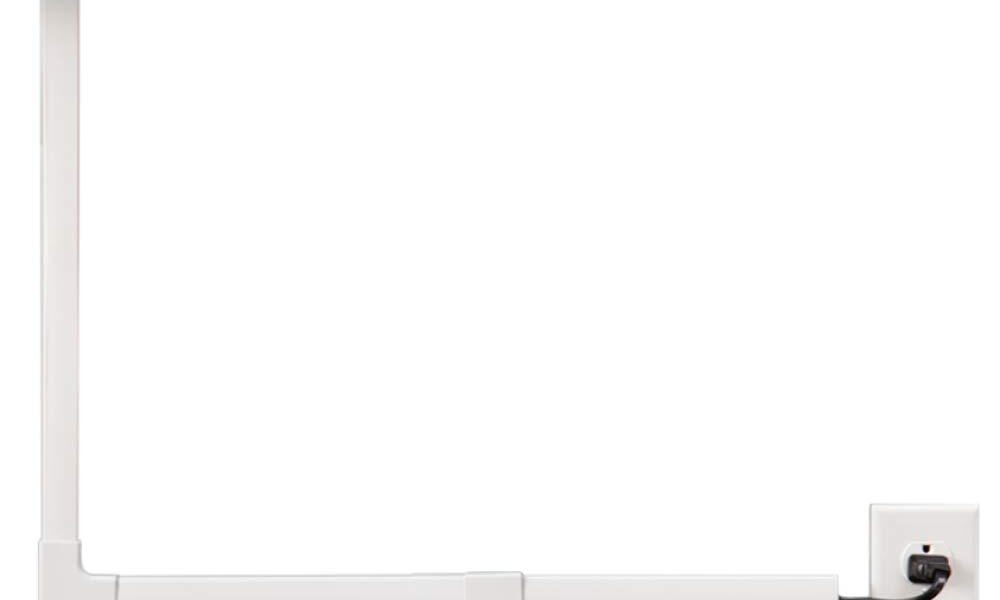In the ever-evolving landscape of modern architecture and interior design, where aesthetics must harmonize with functionality, wall raceways emerge as a subtle yet essential hero. These unobtrusive channel systems seamlessly blend into the contours of walls, providing a practical solution for concealing unsightly wiring and cables that accompany today’s technology-driven environments. Whether in bustling office spaces, contemporary homes, or the heart of a creative studio, wall raceways not only enhance visual appeal but also promote safety and organization. Join us as we explore the versatility and benefits of these architectural elements, delving into their design applications, installation techniques, and the innovative materials that make them a staple in contemporary spaces.
Table of Contents
- Understanding the Basics of Wall Raceway Installation
- Choosing the Right Materials for Optimal Performance
- Innovative Design Ideas to Enhance Aesthetics and Functionality
- Maintenance Tips for Longevity and Safety in Wall Raceway Systems
- Q&A
- The Way Forward
Understanding the Basics of Wall Raceway Installation
Installing wall raceways is a practical solution for managing and concealing your cables and wires. Before diving into installation, it’s essential to gather the right tools and materials. Ensure you have the following items at hand:
- Wall Raceway Kit – Various lengths and styles are available to suit your needs.
- Adhesive or Mounting Tape – Depending on whether you prefer a temporary or permanent solution.
- Cutting Tool – Scissors or a utility knife to trim the raceway to the desired length.
- Measuring Tape – For accurate measurements and to plan your installation layout.
- Level – To ensure your raceway is straight and secure.
Once you have your materials ready, it’s crucial to plan the layout of your wall raceway. Map out where the raceway will run, taking care to avoid obstacles such as doors or windows. Mark the wall lightly with a pencil to guide your installation. Depending on the type of wall raceway, it can typically be installed using the adhesive backing or screws. Below is a simple table highlighting the different installation methods:
| Method | Description | Pros | Cons |
|---|---|---|---|
| Adhesive | Peel-and-stick backing | Quick and clean installation | May not adhere to all surfaces |
| Screws | Drill into wall | More secure attachment | More time-consuming and requires tools |
Choosing the Right Materials for Optimal Performance
When selecting materials for wall raceways, it’s crucial to consider both functionality and environmental impact. The right choice of material influences durability, aesthetics, and adaptability to various conditions. Key materials used in manufacturing wall raceways include:
- PVC (Polyvinyl Chloride): A lightweight and cost-effective option, known for its resistance to moisture and chemicals.
- Aluminum: Offers superior strength and a sleek appearance, perfect for modern settings.
- Steel: Ideal for areas needing extra protection, steel raceways are robust and can handle heavy-duty applications.
- Wood: Although less common, wood adds a warm, organic touch in residential applications.
It’s also essential to evaluate the performance characteristics of these materials. For instance, flexibility in installation and accessibility for future modifications can greatly enhance a wall raceway’s function. By considering the following attributes, one can make an informed decision:
| Material | Durability | Cost-Effectiveness | Installation Ease |
|---|---|---|---|
| PVC | Moderate | High | Easy |
| Aluminum | High | Moderate | Moderate |
| Steel | Very High | Low | Challenging |
| Wood | Moderate | High | Easy |
Innovative Design Ideas to Enhance Aesthetics and Functionality
Imagine transforming a utilitarian element into a statement piece that complements your interior. The wall raceway offers a unique opportunity to blend aesthetics with modern design. By incorporating textured finishes, bold colors, or intricate patterns, these unobtrusive channels can seamlessly integrate into the overall look of a room. Instead of hiding them behind bulky furniture or drapery, why not highlight them? Consider using a matte, pastel finish that softens the appearance or a glossy, vibrant color that serves as a focal point. Backlighting the raceway can also provide an ethereal glow that enhances the ambiance while cleverly disguising wiring.
Functionality meets flair when wall raceways are crafted with creativity. Think of them as a canvas for customization. Here are some innovative suggestions:
- Integrated shelving: Utilize the top of the raceway for small decorative shelves or plant holders.
- Artistic decals: Apply removable vinyl decals that blend with your decor style.
- Multi-purpose connectivity: Design raceways that also allow for charging ports or USB connections for tech-savvy homes.
These thoughtful designs not only provide a clean and organized appearance but also support a clutter-free lifestyle, making your living area both stylish and practical.
Maintenance Tips for Longevity and Safety in Wall Raceway Systems
To ensure your wall raceway systems remain in top shape, regular visual inspections are essential. Look out for visible signs of wear, such as cracks or discoloration, that may indicate stress or environmental damage. Keep the raceways clear of debris and dust accumulations to maintain optimal airflow and prevent overheating. Additionally, it’s advisable to check connections periodically to ensure they are tight and secure, avoiding potential electrical hazards.
For enhanced longevity, consider implementing a strict cleaning regimen. Use a soft, damp cloth to wipe down the exterior surfaces, avoiding harsh chemicals that could degrade materials. In areas prone to moisture, it may be beneficial to use a sealant to protect against water damage. Furthermore, educate staff on safe practices when interacting with raceways, such as not overloading them with excess cables. Establishing a schedule for periodic professional inspections can also be a prudent step in identifying and addressing potential issues before they escalate.
Q&A
Q&A: Understanding Wall Raceway – A Comprehensive Guide
Q1: What is a wall raceway, and what purpose does it serve?
A1: A wall raceway is an architectural feature or a system designed to conceal and organize electrical wiring, data cables, or plumbing within the walls of a building. It serves the dual purpose of maintaining aesthetic appeal by hiding unsightly cords and ensuring that the infrastructure is neatly contained and protected from damage.
Q2: What materials are commonly used to construct wall raceways?
A2: Wall raceways are typically made from a variety of materials, including PVC (polyvinyl chloride), metal, or composite materials. Each material has its own advantages; for example, PVC is lightweight and resistant to corrosion, while metal provides added strength and durability.
Q3: How are wall raceways installed? Is it a DIY-friendly project?
A3: Wall raceway installation can vary in complexity depending on the design and materials used. Basic raceways often involve attaching the track to the wall using screws or adhesive and then threading cables through it. While some homeowners may find it a DIY-friendly project, it’s important to have a clear understanding of electrical codes and safety standards. For more complex installations, especially those involving electrical wiring, consulting a professional is advisable.
Q4: Can wall raceways accommodate various types of cables?
A4: Yes, wall raceways are designed to accommodate a wide range of cables, including power cords, Ethernet cables, coaxial cables, and telephone wiring. It is essential to choose a raceway that matches the diameter and type of cables you plan to use, ensuring that they fit comfortably without excessive bending or crowding.
Q5: Are there specific design considerations to keep in mind when choosing a wall raceway?
A5: Absolutely! When selecting a wall raceway, consider factors such as the room’s aesthetic, the type of cables being used, and the future expansion of your wiring needs. Additionally, pick a raceway color or design that complements your interior decor for a seamless integration. Some manufacturers even offer customizable options for enhanced style and functionality.
Q6: How does a wall raceway contribute to safety in a household?
A6: Wall raceways promote safety by minimizing the risk of tripping hazards and reducing wear on cables, which can occur when they are left exposed. By enclosing the wiring, raceways can help prevent accidental damage from pets or moving furniture. Moreover, they can aid in fire safety by ensuring that electrical components are properly insulated and organized.
Q7: Can wall raceways be used in commercial buildings as well?
A7: Yes, wall raceways are commonly utilized in commercial buildings as well. They are ideal for organizing the extensive wiring necessary for lighting, computers, telecommunication systems, and other critical infrastructure. Their versatility makes them a practical choice for both residential and commercial applications.
Q8: What are some common issues associated with wall raceways, and how can they be addressed?
A8: Common issues with wall raceways can include difficulty in access for making changes or repairs, potential overheating of enclosed cables, and aesthetic mismatches with interior design. To address these concerns, ensure proper planning during installation, avoid overcrowding with cables, and consider removable covers for easy access to wiring.
Q9: Are there any future trends or innovations in wall raceway design?
A9: The future of wall raceways may include more aesthetic and functional innovations, such as smart raceways that allow for wireless charging capabilities or integrated LED lighting. Eco-friendly materials and designs that promote energy efficiency are also gaining traction as sustainability becomes a priority in construction.
Q10: How can one maintain and care for wall raceways?
A10: Maintaining wall raceways is relatively straightforward. Regularly check for any loose fittings or signs of wear, clean them periodically to remove dust buildup, and inspect cables for any damage. Keeping a well-documented layout of the wiring can also facilitate any future modifications or troubleshooting.
wall raceways are essential yet often overlooked components of modern architecture, combining functionality with aesthetics. Whether you’re planning to install one in your home or workplace, understanding their purpose and maintenance will help ensure a seamless and safe integration into your space.
The Way Forward
As we conclude our exploration of wall raceways, it’s clear that these unassuming conduits play a vital role in both the functionality and aesthetics of our spaces. Whether you’re a homeowner, a builder, or an electrician, understanding the benefits and applications of wall raceways can enhance your approach to electrical organization and design. They seamlessly blend safety with style, offering a practical solution to the often cluttered world of wires and cables.
As we move towards an increasingly interconnected environment, the demand for efficient wire management will only grow. By embracing wall raceways, we not only protect our infrastructure but also contribute to a more visually harmonious setting. So, the next time you gaze at the walls around you, consider the hidden avenues of conductivity running within – sleek, safe, and significant in every sense.


